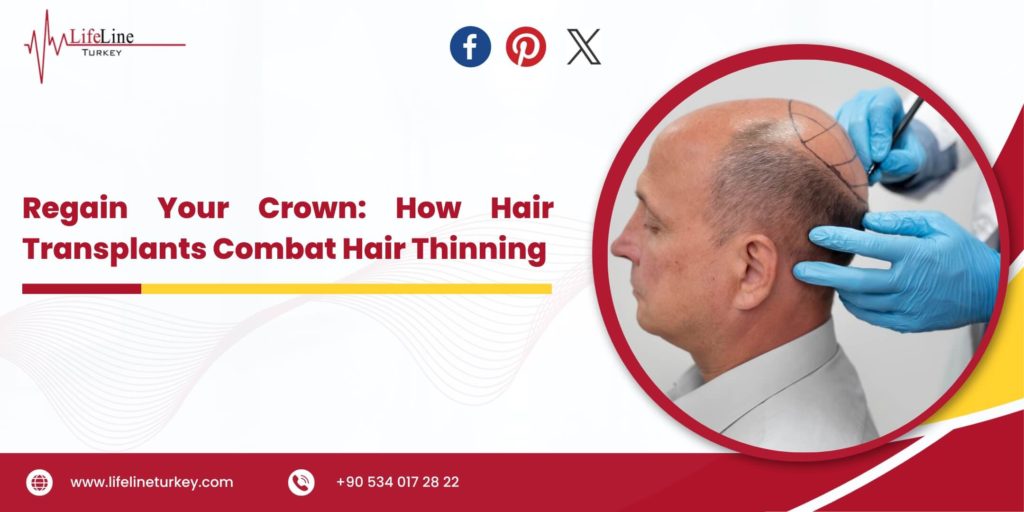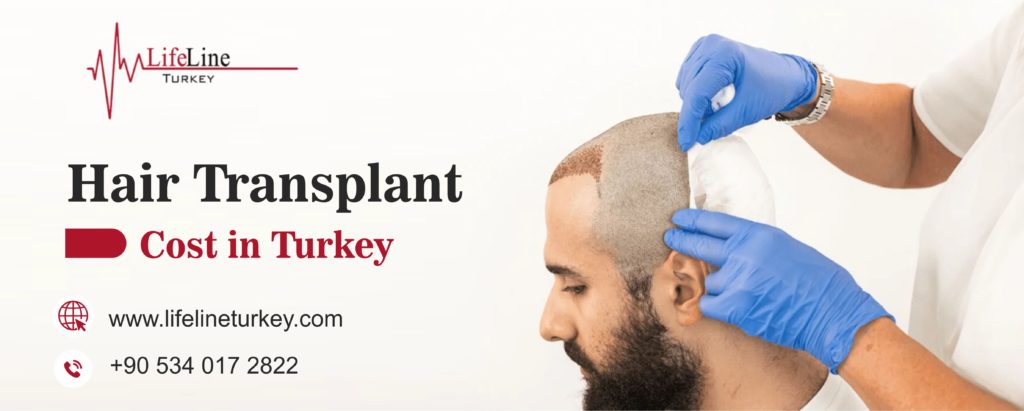Hair loss can be a distressing experience, affecting both men and women and impacting self-esteem and confidence. Hair thinning and baldness can be a significant concern, whether due to aging, genetics, hormonal changes, or medical conditions. Hair transplants in Turkey have emerged as a viable and effective solution to regain a full head of hair and boost self-confidence. This blog will explore the fascinating world of hair transplants and how they combat hair thinning.
Basic Understanding of Hair Thinning and Baldness
Hair thinning and baldness can occur due to various factors, such as genetics, hormonal imbalances, poor diet, stress, and certain medical conditions. The most common type of hair loss is androgenetic alopecia, also known as male-pattern baldness, and female-pattern baldness, which is hereditary.
In both men and women, hair loss typically begins with a receding hairline, thinning at the crown, or a widening part. Over time, this can progress to more extensive hair loss, leading to visible bald patches.
The Psychological Impact of Hair Loss
Hair loss is more than just a physical condition; it can have a profound psychological impact on individuals. It often affects self-esteem, body image, and emotional well-being. People experiencing hair thinning or baldness may feel self-conscious and anxious about their appearance, leading to a decreased quality of life.
Growing Popularity of Hair Transplants
Hair transplantation in Istanbul is a surgical technique that involves removing hair follicles from one part of the body, often referred to as the “donor site,” and implanting them into a bald or thinning area known as the “recipient site.” The goal is to encourage hair growth in the treated area, providing a natural and aesthetically pleasing result.
Over the years, hair transplantation has evolved significantly, leading to minimally invasive procedures and natural-looking outcomes. It’s now one of the most sought-after solutions for combating hair thinning and baldness.
Types of Hair Transplants
- Follicular Unit Transplantation (FUT)
FUT, also known as strip harvesting, is a traditional hair transplant method. Here’s an overview of the process:
- Procedure: In an FUT procedure, a strip of skin containing hair follicles is surgically removed from the donor area (typically the back or sides of the scalp), and then the strip is dissected into individual grafts.
- Graft Preparation: The strip is divided into smaller follicular units containing 1 to 4 hairs each. These units are then prepared for transplantation.
- Recipient Site Preparation: Tiny incisions are made in the recipient area, and the follicular units are implanted into these incisions.
- Advantages:
- Suitable for individuals who need a large number of grafts.
- Typically, this results in a shorter surgery time than FUE for many grafts.
- Generally, it is a cost-effective option.
2. Follicular Unit Extraction (FUE)
FUE is a more modern and less invasive hair transplant technique:
- Procedure: A specialized punch-like instrument extracts individual follicular units directly from the donor area.
- Graft Preparation: The extracted follicular units are prepared for transplantation, similar to the FUT method.
- Recipient Site Preparation: Small incisions are made in the recipient area, and the prepared follicular units are implanted.
- Advantages:
- It leaves minimal scarring, as it involves individual extraction of follicles.
- Suitable for individuals who prefer short haircuts due to the minimal scarring.
- It offers quicker recovery and less discomfort compared to FUT.
3. Direct Hair Implantation (DHI)
DHI is a variation of FUE and involves a more direct method of implantation:
- Procedure: The extraction and implantation of follicular units are done simultaneously using a specialized tool called the Choi implanter pen.
- Advantages:
- Minimizes the time that grafts are outside the body, potentially improving graft survival rates.
- It provides more control over the depth, angle, and direction of the implanted hairs.
The Hair Transplant Process
Consultation and Evaluation
The journey begins with a consultation with a hair transplant specialist. They evaluate the extent of hair loss, discuss expectations, and determine the individual’s suitability for a hair transplant.
Preparation
Surgeons prepare the donor and recipient areas before the transplant. The donor area, often the back or sides of the head, is trimmed, and local anesthesia is administered to numb the area.
Extraction
Hair follicles are extracted from the donor area using the follicular unit extraction (FUE) or follicular unit transplantation (FUT) methods.
Graft Preparation
The extracted hair follicles are carefully prepared under a microscope, ensuring the removal of excess tissue and creating grafts for transplantation.
Recipient Site Creation
Tiny incisions are made in the recipient area, determining the transplanted hair’s angle, direction, and density.
Graft Implantation
The prepared hair grafts are meticulously implanted into the recipient sites, producing natural and aesthetically pleasing hair distribution.
How Hair Transplants Combat Hair Thinning
Natural-Looking Results
Modern hair transplant techniques result in natural-looking hair growth that seamlessly blends with existing hair. The transplanted hair mimics the natural pattern, making it difficult to distinguish from the original.
Permanent Solution
Hair transplants provide a permanent solution to hair loss. Once the transplanted hair follicles establish themselves, they continue to grow and thrive throughout the individual’s lifetime.
Improved Self-Confidence
Restoring a full head of hair can significantly boost self-confidence and improve self-esteem. Individuals often feel more positive about their appearance, leading to a more fulfilling social and professional life.
Minimal Maintenance
Transplanted hair requires minimal maintenance. Individuals can treat their transplanted hair like natural hair—washing, cutting, styling, and coloring as desired.
Customized Solutions
Hair transplants are highly customizable to cater to individual needs and preferences. Surgeons work closely with patients to design a hairline and density that suits their facial features and desired look.
Non-Invasive and Safe
With technological advancements and surgical techniques, hair transplants have become minimally invasive, ensuring a safe and relatively pain-free procedure. Recovery is usually quick, allowing individuals to resume regular activities shortly after the procedure.
Lifeline Turkey’s Permanent Solution for Hair Thinning
The best hair transplants in Turkey have revolutionized how we combat hair thinning and baldness. With their ability to provide natural-looking, permanent results and enhance self-confidence, they’ve become a popular choice for those seeking to regain their hair crown. Consult Lifeline Turkey if you’re considering a hair transplant. Their specialist can help you understand the process, set realistic expectations, and achieve the hair restoration you desire. Embrace the opportunity to regain your hair, confidence, and self-assurance. Call them today!



